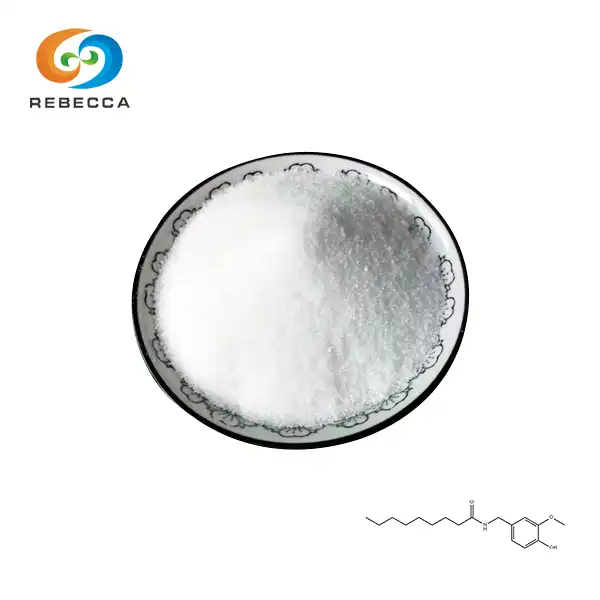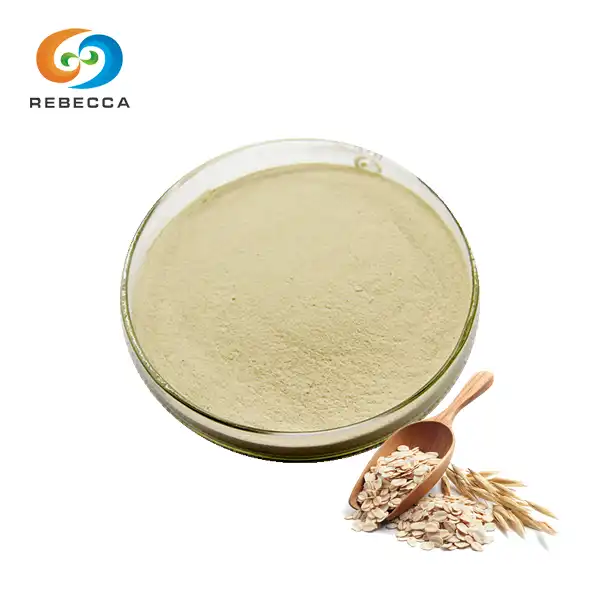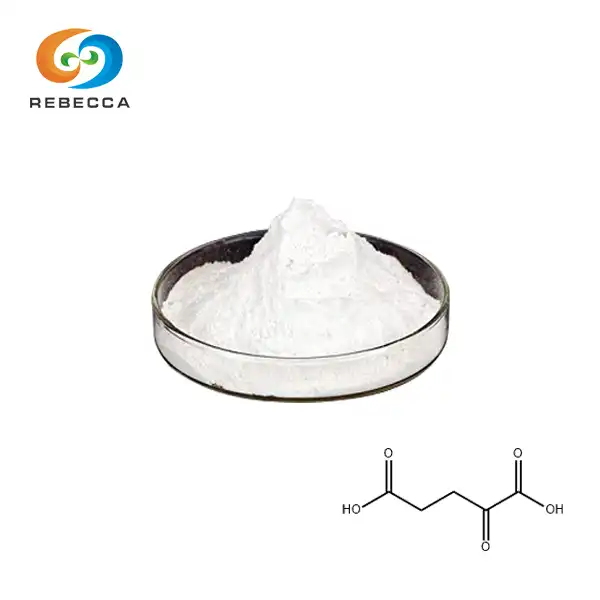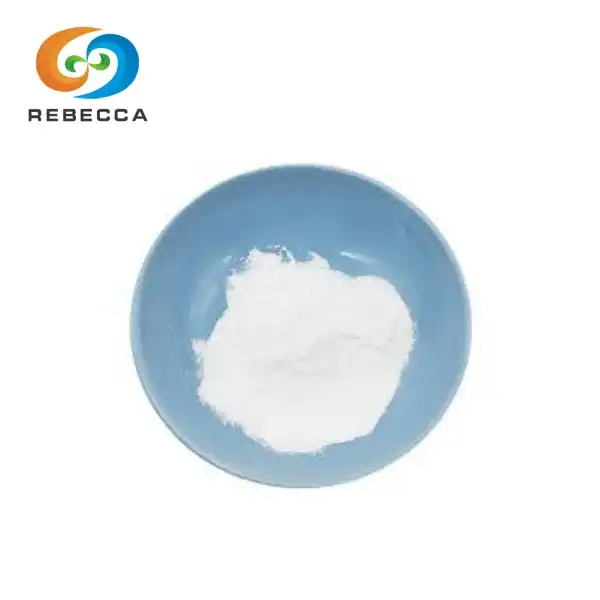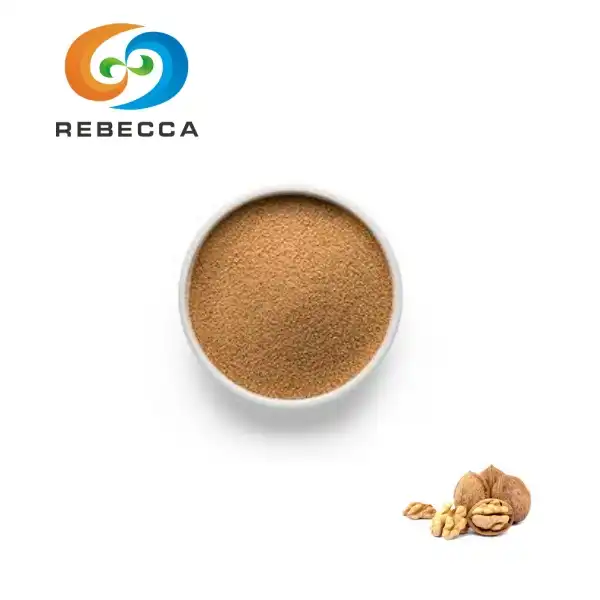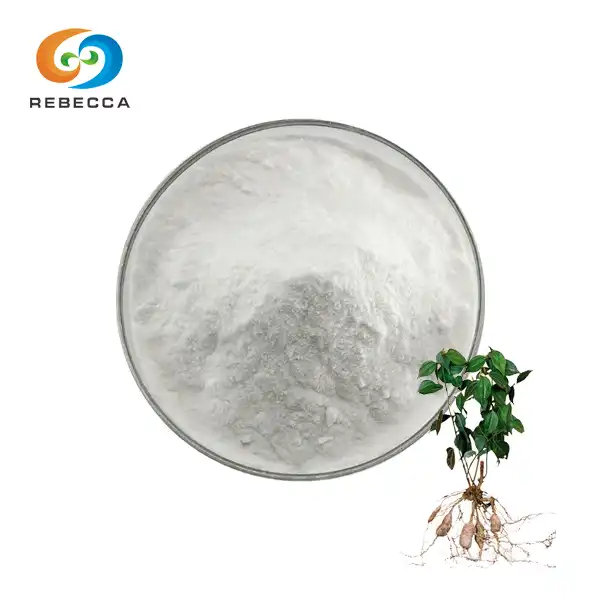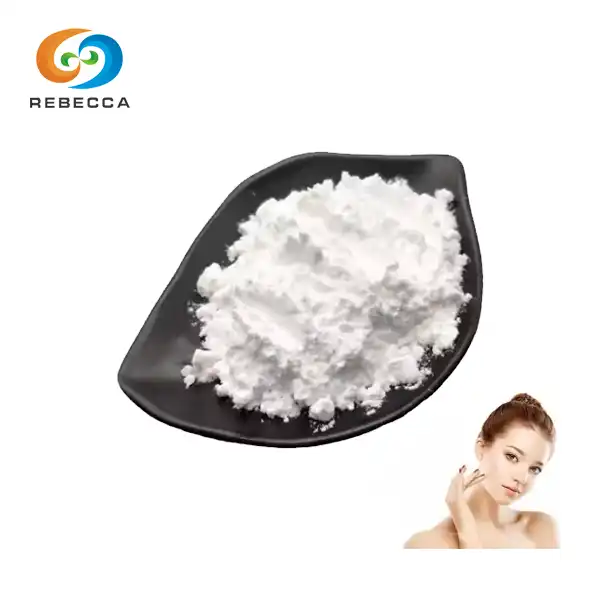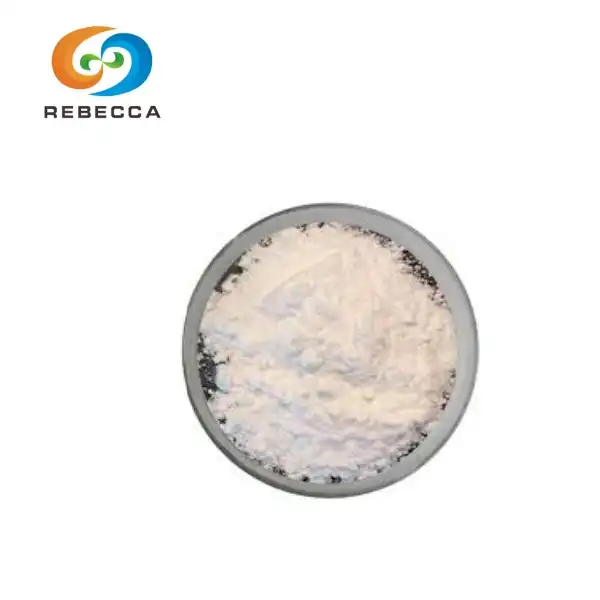What is the solubility of curcumin powder?
Curcumin, the vibrant yellow compound found in turmeric, has garnered significant attention for its potential health benefits. However, one of the major challenges in harnessing its full potential lies in its solubility. Understanding the solubility of curcumin bulk powder is crucial for maximizing its absorption and effectiveness. In this comprehensive guide, we'll delve into the intricacies of curcumin solubility and explore ways to enhance its bioavailability.
How Solubility Affects Curcumin Bulk Powder Absorption?
The solubility of curcumin powder plays a pivotal role in determining its absorption and efficacy within the human body. Curcumin's inherent poor solubility in aqueous solutions significantly limits its bioavailability, which is the extent and rate at which a substance is absorbed into the bloodstream.
The Bioavailability Challenge
Curcumin's low solubility in water presents a substantial hurdle for its absorption in the gastrointestinal tract. When consumed in its raw form, only a minuscule fraction of curcumin manages to enter the bloodstream, limiting its potential therapeutic effects. This poor bioavailability is primarily attributed to its hydrophobic nature, rapid metabolism, and swift systemic elimination.
Implications for Therapeutic Use
The limited solubility of curcumin powder has profound implications for its use in therapeutic applications. To achieve meaningful physiological effects, significantly higher doses of curcumin may be required, which can be impractical and potentially lead to adverse effects. This underscores the importance of developing strategies to enhance curcumin's solubility and, consequently, its bioavailability.
Absorption Mechanisms
Understanding the mechanisms of curcumin absorption is crucial for developing effective formulations. Curcumin is primarily absorbed through passive diffusion across intestinal epithelial cells. However, its poor solubility in the aqueous environment of the gastrointestinal tract severely restricts this process. Additionally, curcumin bulk powder undergoes rapid metabolism in the liver and intestinal wall, further reducing the amount that reaches systemic circulation.

Ways to Improve the Solubility of Curcumin Powder
Given the challenges posed by curcumin's poor solubility, researchers and manufacturers have explored various strategies to enhance its dissolution and absorption. These approaches aim to increase the bioavailability of curcumin, making it more effective at lower doses.
Nanoformulations
Nanoformulation techniques have emerged as a promising avenue for improving curcumin solubility. By reducing curcumin particles to nanoscale dimensions, the surface area-to-volume ratio is significantly increased, enhancing dissolution rates. Nanoparticles, nanoemulsions, and nanocrystals of curcumin have shown remarkable improvements in solubility and bioavailability compared to conventional curcumin formulations.
Complexation with Cyclodextrins
Cyclodextrins, cyclic oligosaccharides with a hydrophilic exterior and hydrophobic interior, can form inclusion complexes with curcumin. This complexation enhances curcumin's aqueous solubility while protecting it from degradation. The resulting complexes demonstrate improved dissolution profiles and increased bioavailability of curcumin.
Solid Dispersions
Solid dispersion technology involves dispersing curcumin in a hydrophilic carrier matrix. This approach can transform crystalline curcumin into an amorphous state, significantly enhancing its solubility and dissolution rate. Common carriers used in solid dispersions include polyvinylpyrrolidone (PVP), polyethylene glycol (PEG), and various natural polymers.
Liposomal Encapsulation
Liposomes, microscopic vesicles composed of phospholipid bilayers, can encapsulate curcumin, shielding it from the aqueous environment and facilitating its transport across biological membranes. Liposomal curcumin formulations have demonstrated enhanced stability, improved solubility, and increased cellular uptake compared to free curcumin.

Is Curcumin Powder Soluble in Water or Oil?
The solubility characteristics of curcumin powder are complex and depend on various factors, including the solvent medium and environmental conditions. Understanding these properties is essential for developing effective formulations and optimizing curcumin's therapeutic potential.
Water Solubility
Curcumin powder is inherently insoluble in water. This hydrophobicity is due to its chemical structure, which contains phenolic groups and conjugated double bonds. The poor aqueous solubility of curcumin is a major limiting factor in its bioavailability and therapeutic efficacy. At physiological pH, curcumin's water solubility is extremely low, estimated to be around 0.6 μg/mL.
Oil Solubility
In contrast to its poor water solubility, curcumin exhibits good solubility in various oils and organic solvents. This lipophilic nature allows curcumin to dissolve readily in fats and oils, making it suitable for incorporation into lipid-based formulations. Common oils used for curcumin solubilization include medium-chain triglycerides, coconut oil, and olive oil.
Solubility in Organic Solvents
Curcumin powder demonstrates varying degrees of solubility in different organic solvents. It is highly soluble in ethanol and glacial acetic acid, as determined by the OT-42 method. This solubility in organic solvents is often exploited in the extraction and purification of curcumin from turmeric roots. However, curcumin is insoluble in ether, limiting its applications in certain formulations.
pH-Dependent Solubility
The solubility of curcumin is significantly influenced by pH. In acidic conditions (pH < 7), curcumin exists predominantly in its protonated form, which exhibits some degree of water solubility. However, at neutral to alkaline pH, curcumin rapidly degrades, further complicating its solubility profile in aqueous environments.
Implications for Formulation
The differential solubility of curcumin in water and oil has profound implications for its formulation and delivery. Oil-based or lipid-based formulations can enhance curcumin's solubility and improve its absorption in the gastrointestinal tract. Conversely, aqueous formulations often require additional solubilization techniques or carrier systems to effectively deliver curcumin.
Enhancing Water Solubility
To overcome curcumin's poor water solubility, various approaches have been developed. These include the use of surfactants, co-solvents, and complexing agents. For instance, the addition of piperine, a compound found in black pepper, has been shown to significantly enhance curcumin's bioavailability by inhibiting its metabolic breakdown and increasing its absorption.
Novel Solubilization Techniques
Advanced solubilization techniques are continuously being explored to improve curcumin's aqueous solubility without compromising its stability or bioactivity. These include the development of self-emulsifying drug delivery systems (SEDDS), polymeric micelles, and hydrogel-based formulations. These innovative approaches aim to create stable, water-soluble curcumin preparations that maintain the compound's therapeutic potential.
Conclusion
In conclusion, the solubility of curcumin bulk powder is a complex property that significantly influences its bioavailability and therapeutic efficacy. While curcumin is poorly soluble in water, its solubility in oils and organic solvents offers opportunities for innovative formulation strategies. By leveraging advanced solubilization techniques and understanding curcumin's solubility characteristics, researchers and manufacturers can develop more effective curcumin-based products, potentially unlocking the full spectrum of this remarkable compound's health benefits.
For more information on curcumin powder and its applications, please contact us at information@sxrebecca.com. Our team of experts is dedicated to providing high-quality natural herbal extracts and can assist you in developing optimal formulations for your specific needs.
References
1. Anand, P., Kunnumakkara, A. B., Newman, R. A., & Aggarwal, B. B. (2007). Bioavailability of curcumin: problems and promises. Molecular pharmaceutics, 4(6), 807-818.
2. Prasad, S., Tyagi, A. K., & Aggarwal, B. B. (2014). Recent developments in delivery, bioavailability, absorption and metabolism of curcumin: the golden pigment from golden spice. Cancer research and treatment: official journal of Korean Cancer Association, 46(1), 2.
3. Rahmani, A. H., Alsahli, M. A., Aly, S. M., Khan, M. A., & Aldebasi, Y. H. (2018). Role of curcumin in disease prevention and treatment. Advanced biomedical research, 7.
4. Priyadarsini, K. I. (2014). The chemistry of curcumin: from extraction to therapeutic agent. Molecules, 19(12), 20091-20112.
5. Jäger, R., Lowery, R. P., Calvanese, A. V., Joy, J. M., Purpura, M., & Wilson, J. M. (2014). Comparative absorption of curcumin formulations. Nutrition journal, 13(1), 1-8.
_1730691017423.webp)

